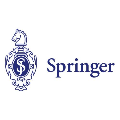We consider unsourced random access (uRA) in a cell-free (CF) user-centric wireless network, where a large number of potential users compete for a random access slot, while only a finite subset is active. The random access users transmit codewords of length $L$ symbols from a shared codebook, which are received by $B$ geographically distributed radio units (RUs) equipped with $M$ antennas each. Our goal is to devise and analyze a \emph{centralized} decoder to detect the transmitted messages (without prior knowledge of the active users) and estimate the corresponding channel state information. A specific challenge lies in the fact that, due to the geographically distributed nature of the CF network, there is no fixed correspondence between codewords and large-scale fading coefficients (LSFCs). To overcome this problem, we propose a scheme where the access codebook is partitioned in "location-based" subcodes, such that users in a particular location make use of the corresponding subcode. The joint message detection and channel estimation is obtained via a novel {\em Approximated Message Passing} (AMP) algorithm to estimate the linear superposition of matrix-valued "sources" corrupted by Gaussian noise. The matrices to be estimated exhibit zero rows for inactive messages and Gaussian-distributed rows corresponding to the active messages. The asymmetry in the LSFCs and message activity probabilities leads to \emph{different statistics} for the matrix sources, which distinguishes the AMP formulation from previous cases.In the regime where the codebook size scales linearly with $L$, while $B$ and $M$ are fixed, we present a rigorous high-dimensional analysis of the proposed AMP algorithm. Then, exploiting the fundamental decoupling principle of AMP, we provide a comprehensive analysis of Neyman-Pearson message detection, along with the subsequent channel estimation.
翻译:暂无翻译



